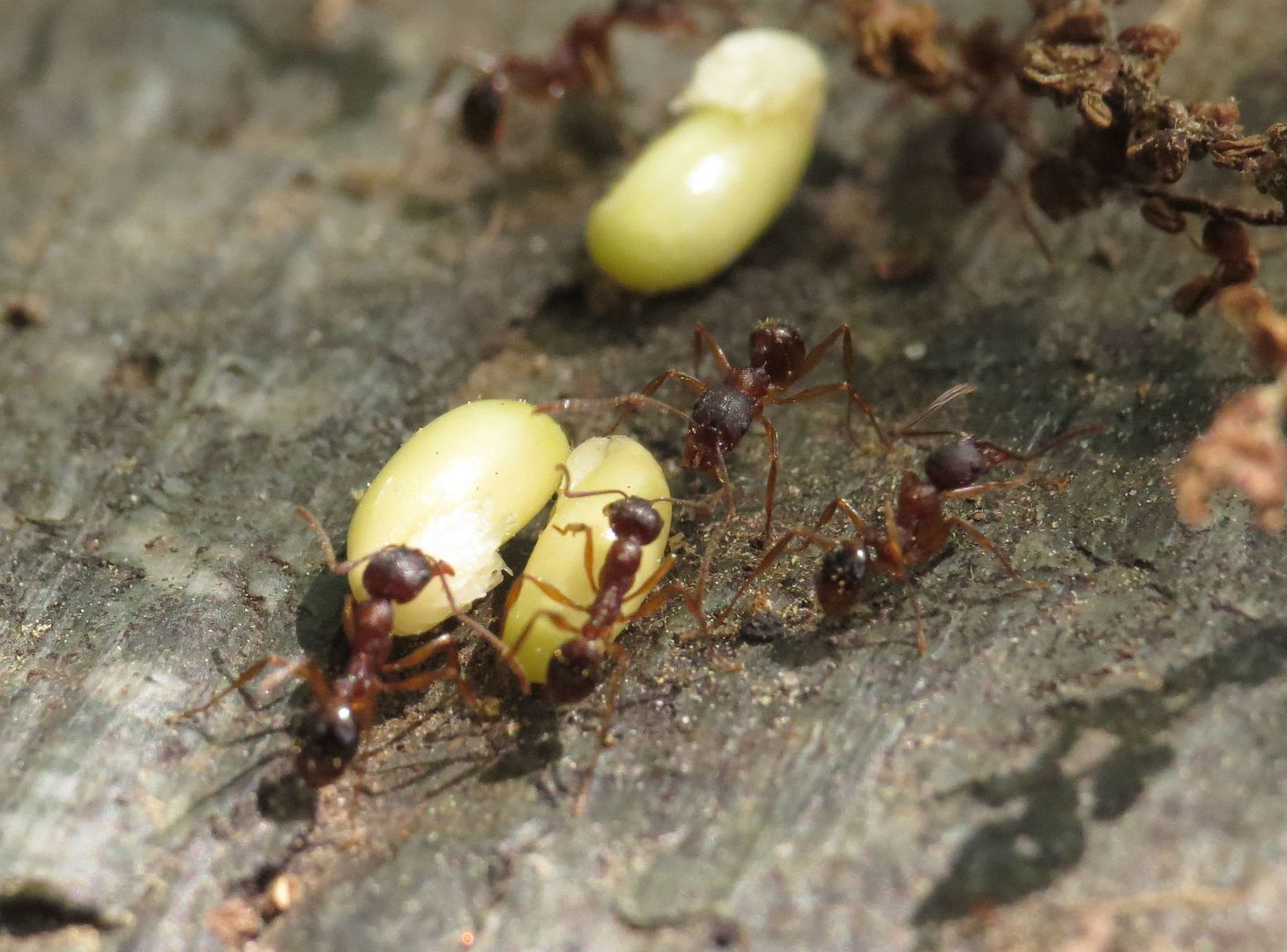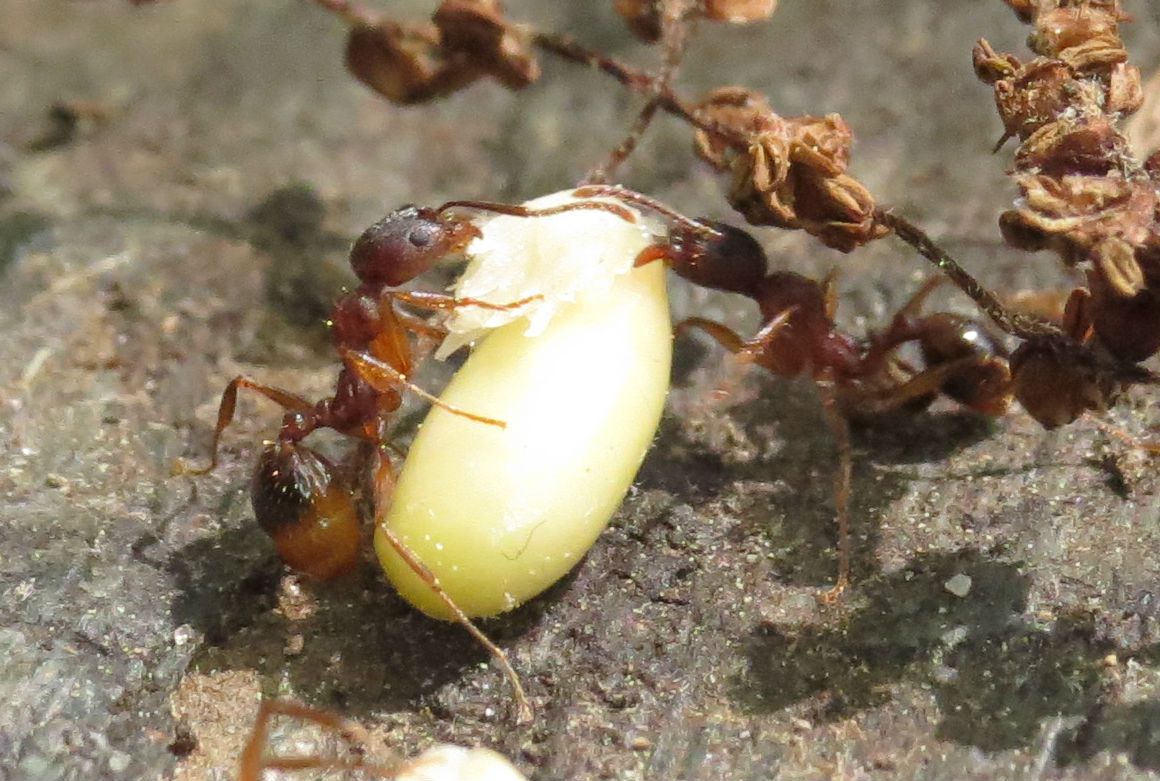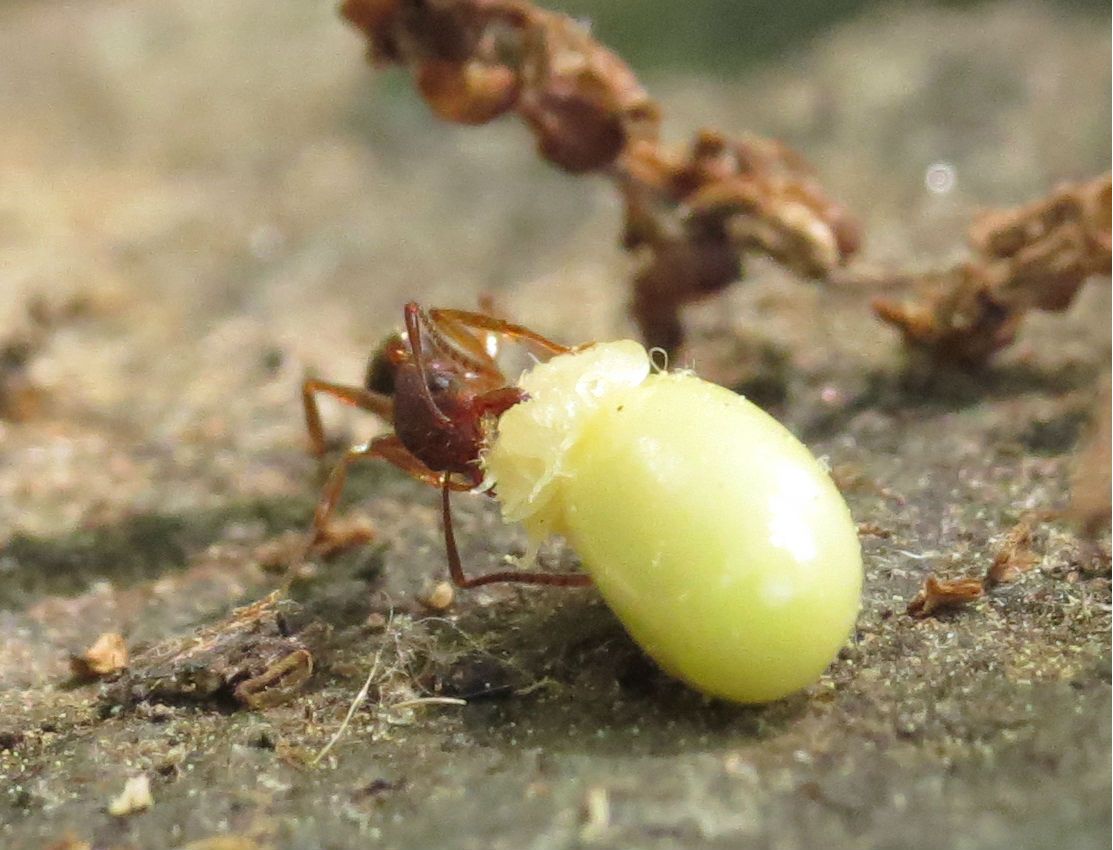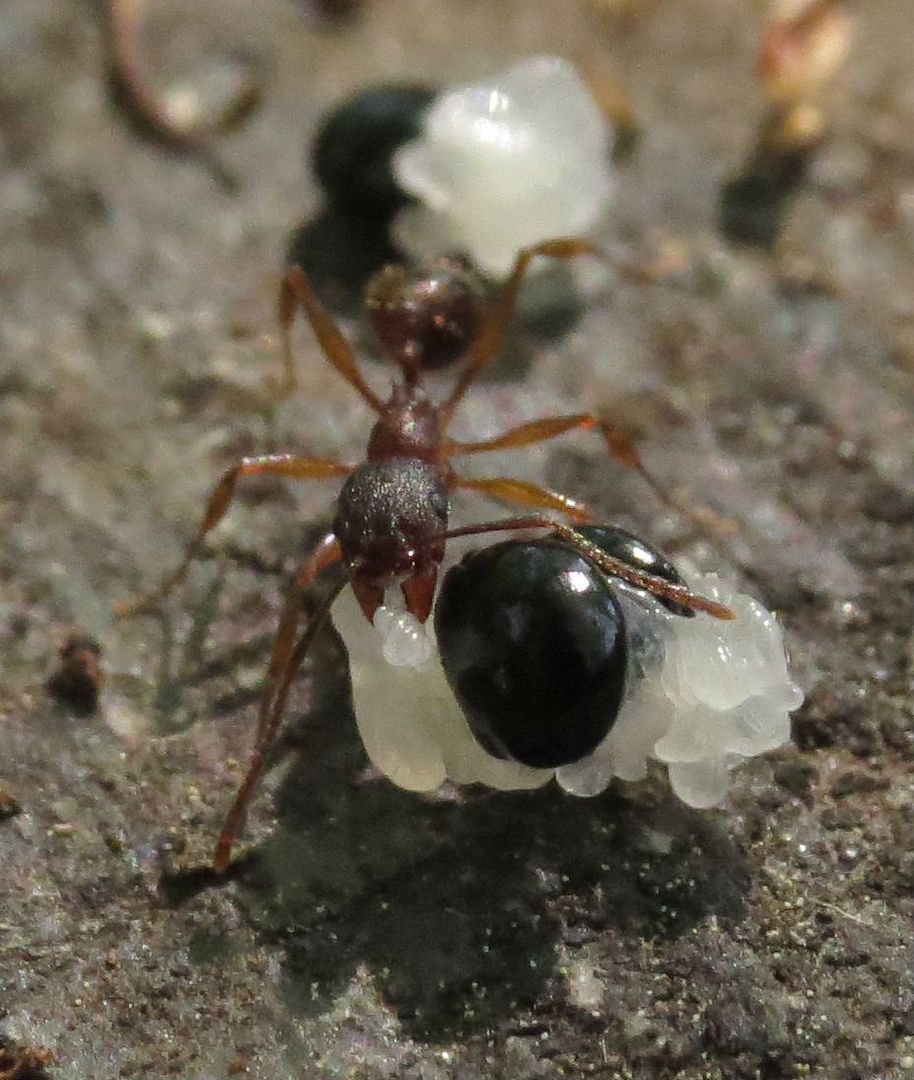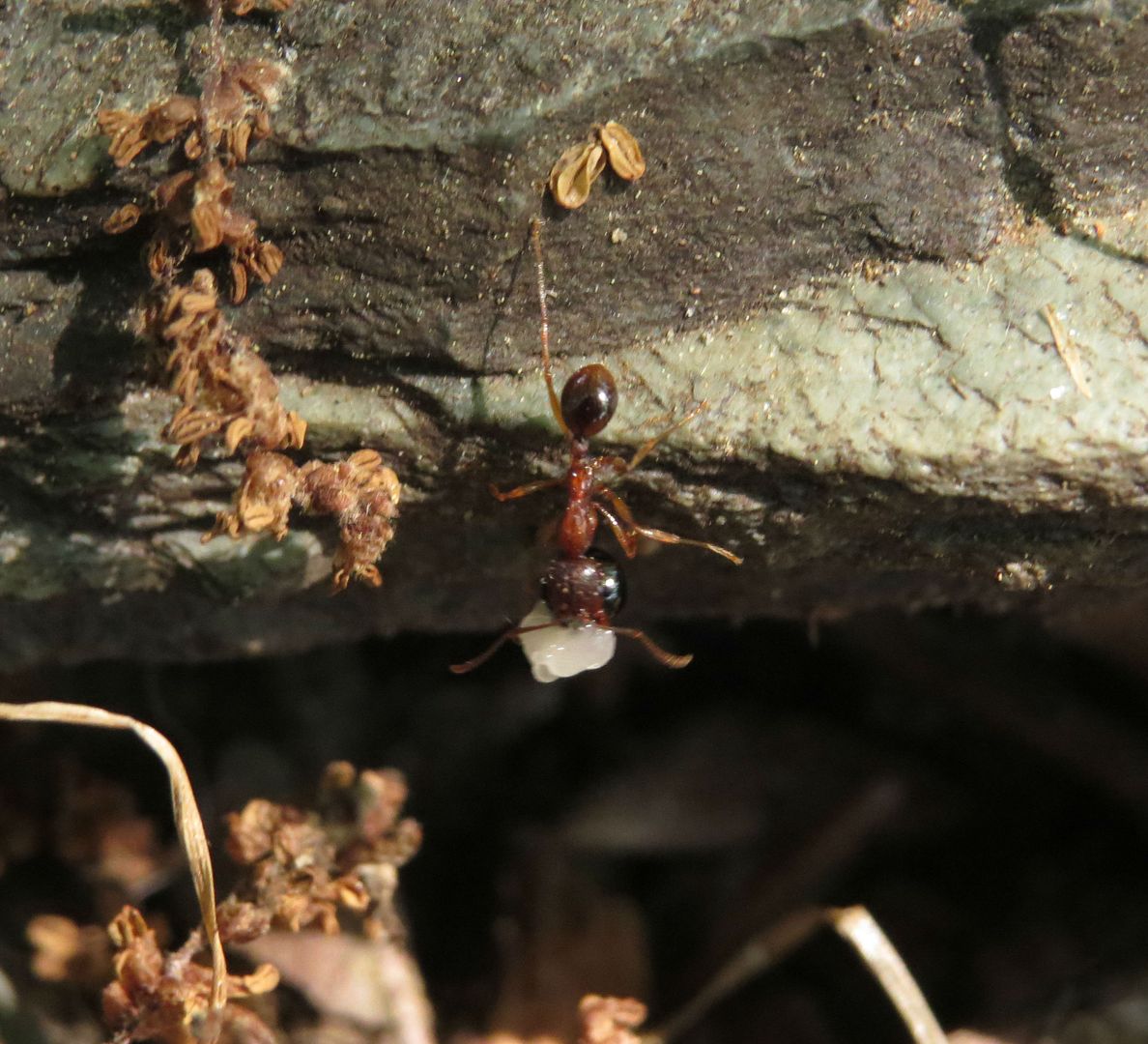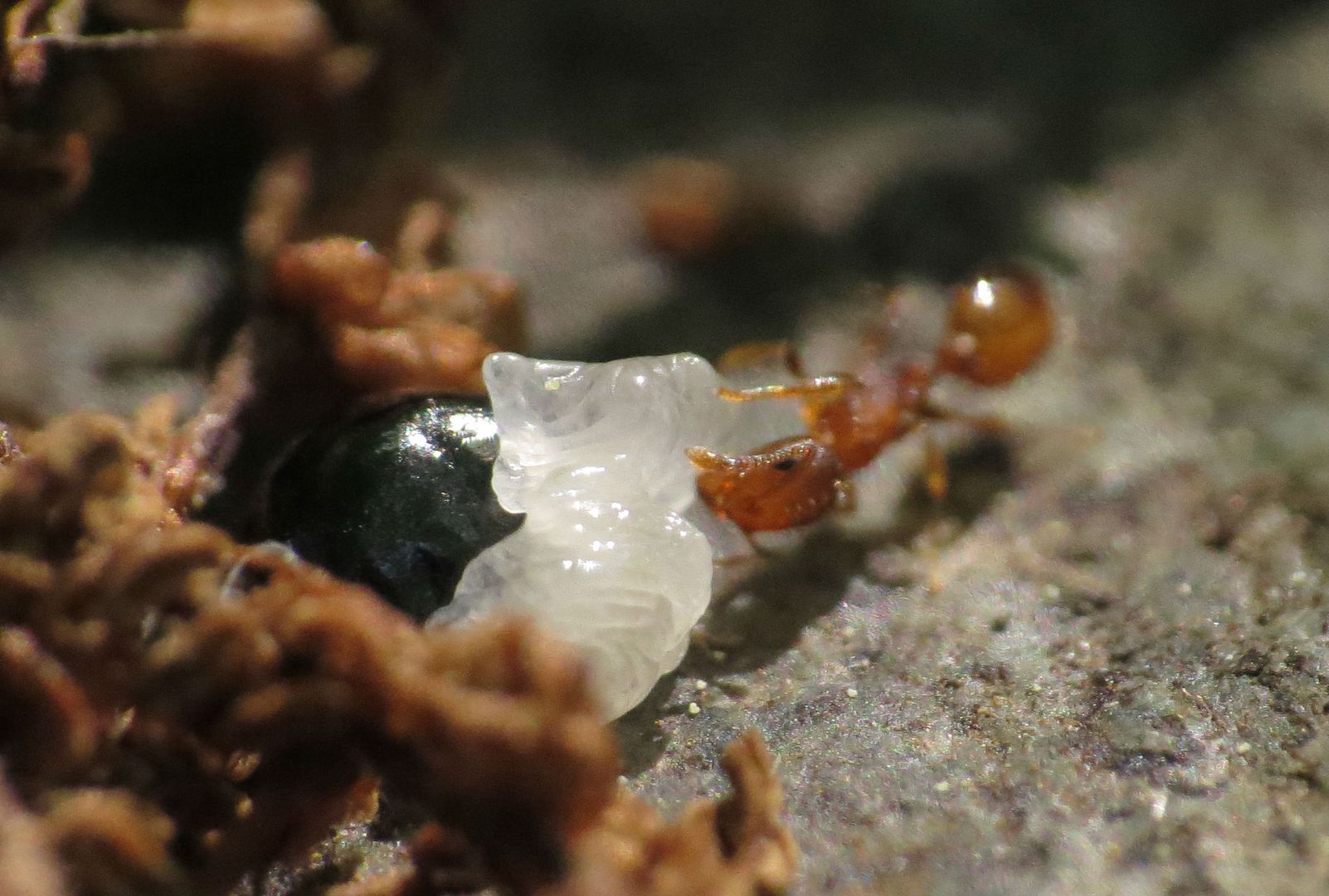I so rarely get to see my specimens of Twinleaf, Jeffersonia diphylla, all flowering at once, let alone be pollinated by one another to see the seedpods. Normally the pods don't grow bigger than a nickle and shrivel up with nonviable seed inside. Today though I came across a fairly large seedpod. I reached down to see if it was soft enough to harvest and the darn thing broke right off the stem on me. Worst of all, the seeds weren't ready yet.... Waste not, want not.
Twinleaf disperses its seeds with aid of ants. Normally the seeds are rock hard and brown very much like unpopped popcorn. These had their little bit of elaiosome formed but the seeds were soft and green, like peas or green beans. The ants didn't seem to mind this and carried them off all the same.
The elaiosome is what's treasured by the ants but with the seeds still soft it's likely they'll be eaten too. This is just as well though. I doubt they would have grown in this early state anyway.
The ants here are Aphaenogaster rudis, which is actually a complex of several species. DNA analysis to count the number of chromosomes is required for a true species ID but overall they're the same. The species names are more or less scientific codes instead of Latin names, so the blanket term A. rudis works fine. They're all commonly found in woodlands across North America, they all nesting in soil and sometimes rotten wood in contact to the soil. They all form colonies with populations ranging from 2,000 - 12,000 ants. Nests are small and move around on occasion, making them ideal seed dispersers, along with their size.
Ideally the seeds would be rock hard and either discarded in the nest, or hauled out to the waste or midden pile where it would be buried in dead insects and other discarded seed husks anyway. Often plant seeds like this require two winters to germinate, where it's more likely the colony of ants has moved on, and or the garbage heap has decomposed into plant fertilizer. Some plants such as Trilliums emit a terrible odor when they germinate which likely helps encourage the ant colony to move along.
The ants find nourishment everywhere they can, even among the seedpod itself. If the ants didn't come along to clean out the seeds, rodents, birds, and wasps would have. Rodents and birds love eating the seeds. Wasps go for the elaiosome just like the ants, but are unlikely candidates for seed dispersal. They may drop them on the surface for birds and rodents to find, or bury them too deep within the earth, or the seed could end up within the dead branch of a tree.
One plant that was right on time was the Woodland Poppy, Stylophorum diphyllum. The same idea of seed dispersal applies, however I can't get it out of my head how much the elaiosome to this plant resembles ant brood. It just looks like clusters of eggs and larva, which ants are more than happy to eat, especially if it doesn't belong to them.
The seeds, being ripe, are rock hard and firmly attached to the elaiosome packet. I have trouble removing it and I'm a human! It's unlikely the ants will be able to chew them into dust or "ant bread" so they'll be discarded within the nest and in a few years I'll likely have a patch of woodland poppy growing here.
Where this strategy of seed dispersal can go wrong though is when the wrong sort of ant finds the seed. This is an Acorn Ant known as Temnothorax curvispinosus. They're adorably tiny, with small colonies of ~200 workers that all fit right inside a hollow acorn, hollow plant stems, or dead plant matter. Not only do they nest in the wrong sort medium for starting seeds, but also the workers are too small to carry the seeds off. They're more likely to just recruit more workers from the colony and deal with the elaiosome where they found it, and the seed is simply left where it was beneath the parent plant.
As a disclaimer I will admit all of these photos were staged to a point. You'll notice I just opened the seedpods and spilled them on a stepping stone where an Aphaenogaster rudis colony happens to nest. I just don't have the time to wait for this to happen naturally in my yard, but trust me it does. There are plenty of Woodland Poppy plants with open seedpods on them right now that have spilled their seeds in the garden. I typically find Tapinoma sessile and Crematogaster cerasi stealing the elaiosome from the seeds where they fell and don't disperse them. The occasional Aphaenogaster forager does find a few though and bring them back to the colony. Since they've been self seeding in my yard for the past three years now I've been finding Woodland Poppies coming up in places where ant colonies tend to nest, and or have been dragged away from the parent plant a short ways at least. Sometimes the ant carrying the seed home gives up or gets disturbed by a spider or something.
Turkey Corn, Dicentra eximia, will likely be the next plant who's seeds do this to ripen in my garden... sadly I missed my chance with Hepatica this year, but they seem okay about germinating where they fall anyhow. So though a plant uses this strategy to disperse its seeds, it's not always required for success, simply a way to give them a leg up.
